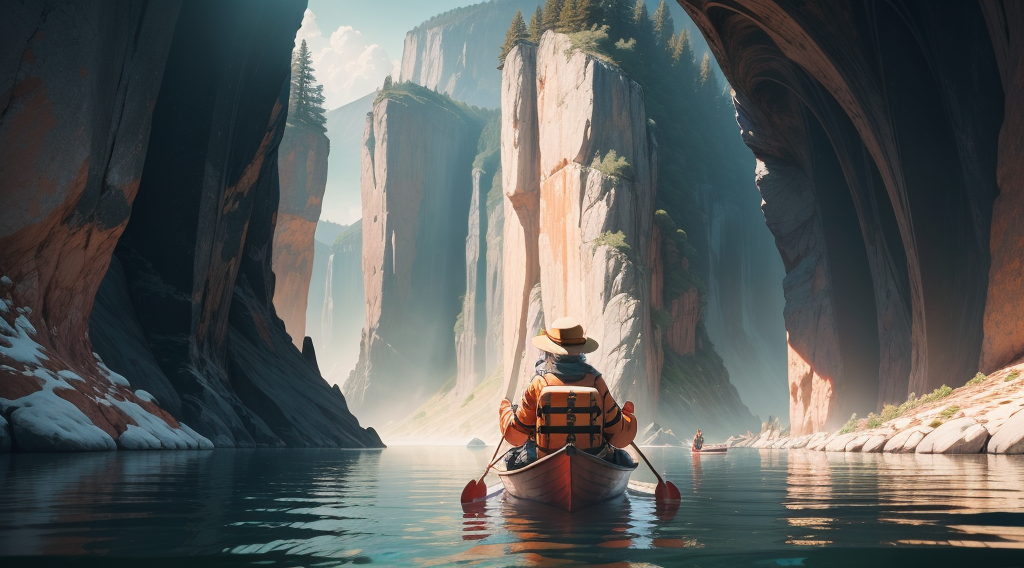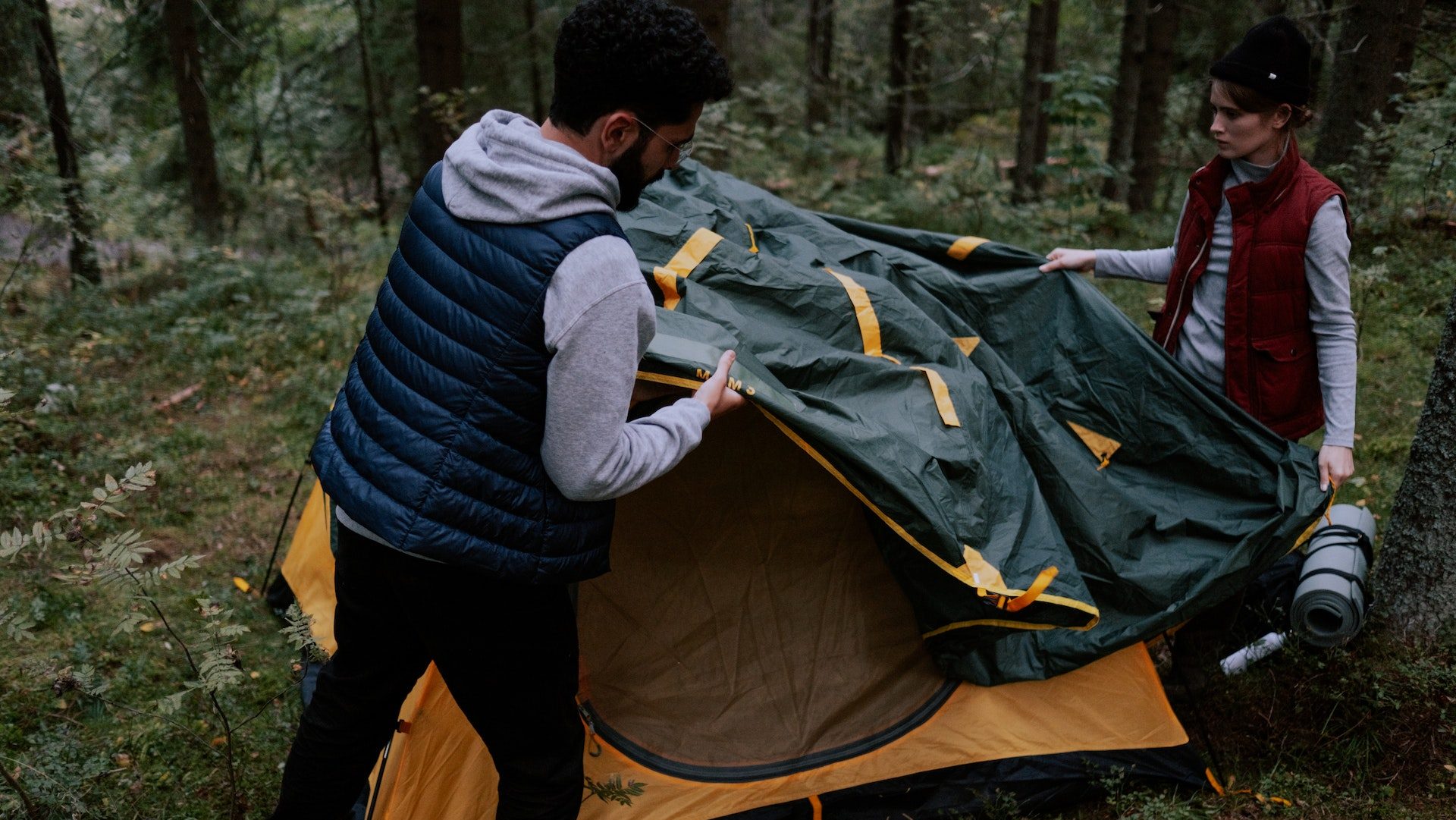Canoe Camping is a unique and exciting way to explore the great outdoors. It combines the thrill of paddling with the serenity of camping, allowing you to access remote destinations that are often unreachable by foot. Whether you’re gliding through calm lakes, navigating winding rivers, or exploring hidden coves, canoe camping offers a one-of-a-kind adventure that connects you with nature in a whole new way.
Planning Your Canoe Camping Trip
- Researching Destinations
- Start by researching potential canoe camping destinations. Consider factors such as distance from your home, accessibility, water conditions, and the natural beauty of the area. Popular canoe camping destinations include the Boundary Waters Canoe Area Wilderness in Minnesota, Algonquin Provincial Park in Ontario, and the Adirondack Park in New York.
- Checking Weather Conditions
- Before heading out, check the weather forecast for your chosen destination. Be prepared for changing weather conditions, especially if you’re planning a multi-day trip. Pack rain gear, extra layers, and be ready to adjust your plans if the weather takes a turn for the worse.
- Creating a Trip Itinerary
- Plan your route in advance and create a detailed trip itinerary. Include information such as your planned route, expected arrival and departure times, and emergency contact information. Share your itinerary with a trusted friend or family member who will know where you are and when to expect you back.
Table: Canoe Camping Trip Planning Checklist
| Task | Description |
|---|---|
| Research Destinations | Look for canoe-friendly lakes, rivers, and parks. Consider accessibility, water conditions, and natural beauty. |
| Check Weather Conditions | Monitor the weather forecast for your chosen destination. Be prepared for changing conditions. |
| Create Trip Itinerary | Plan your route and create a detailed itinerary. Share it with a trusted contact. |
| Obtain Permits | Check if your destination requires permits for camping or canoeing. Obtain necessary permits in advance. |
| Pack Essentials | Make a list of essential gear and equipment. Pack according to your needs and the expected weather conditions. |
Choosing the Right Canoe
Selecting the right canoe for your camping trip is crucial for a successful adventure. The type of canoe you choose will depend on factors such as the water conditions, the length of your trip, and the amount of gear you’ll be carrying. Here are some tips to help you choose the right canoe:
- Types of Canoes for Camping
- Recreational Canoes: These are stable, easy to maneuver, and suitable for calm waters. They are ideal for beginners and short trips.
- Touring Canoes: These are designed for longer trips and can handle a variety of water conditions. They offer more storage space for camping gear.
- Whitewater Canoes: These are built for rough waters and rapids. They are highly maneuverable but less stable on flat water.
- Factors to Consider When Selecting a Canoe
- Length: Longer canoes are faster and offer more storage space, but they can be harder to maneuver. Shorter canoes are more agile but may have less room for gear.
- Width: Wider canoes are more stable but slower. Narrower canoes are faster but may feel less stable.
- Material: Canoes can be made from materials such as aluminum, fiberglass, or plastic. Consider the weight, durability, and cost of each material.
Packing for Your Canoe Camping Trip
Packing for a canoe camping trip requires careful planning to ensure you have everything you need without overloading your canoe. Here are some packing tips to help you prepare:
- Essential Gear and Equipment
- Camping Gear: Tent, sleeping bag, sleeping pad, cooking equipment, and food.
- Clothing: Weather-appropriate clothing, rain gear, and extra layers.
- Navigation Tools: Maps, compass, and GPS device.
- Safety Gear: First aid kit, whistle, flashlight, and fire-starting materials.
- Packing Tips to Maximize Space and Balance Weight
- Use Dry Bags: Store your gear in dry bags to keep it waterproof and organized.
- Balance the Load: Distribute the weight evenly in your canoe to improve stability and maneuverability.
- Pack Light: Only bring what you need. Avoid packing heavy or bulky items.
- Waterproofing Your Belongings
- Line Your Packs: Use trash bags or pack liners to waterproof the inside of your packs.
- Seal Electronics: Store electronics in ziplock bags or waterproof cases.
- Protect Valuables: Keep important documents and valuables in a separate waterproof pouch.
List: Canoe Camping Packing Essentials
- Camping Gear: Tent, sleeping bag, sleeping pad, cooking equipment, food
- Clothing: Weather-appropriate clothing, rain gear, extra layers
- Navigation Tools: Maps, compass, GPS device
- Safety Gear: First aid kit, whistle, flashlight, fire-starting materials
- Personal Items: Sunscreen, insect repellent, toiletries, medications
In Case of emergencies having an emergency kit could be a lifesaver.
Navigating on the Water
Paddling a canoe requires skill and practice, especially when you’re carrying camping gear. Here are some tips to help you navigate on the water:
- Basic Canoeing Techniques
- Forward Stroke: The most common paddling stroke. Rotate your torso and use your whole body to power the stroke.
- J-Stroke: A steering stroke that helps keep the canoe going straight. Add a slight hook at the end of your forward stroke.
- Sweep Stroke: A wide, arcing stroke used to turn the canoe.
- Tips for Paddling Efficiently
- Use Proper Form: Sit up straight, grip the paddle correctly, and use your torso to power your strokes.
- Paddle in Sync: If you’re paddling with a partner, coordinate your strokes to move more efficiently.
- Conserve Energy: Pace yourself and take breaks when needed.
- Staying Safe on the Water
- Wear a Life Jacket: Always wear a life jacket while on the water.
- Stay Alert: Watch for obstacles, changes in water conditions, and other boaters.
- Know Your Limits: Don’t push yourself too hard or attempt to paddle in conditions beyond your skill level.
Setting Up Camp
Once you’ve reached your campsite, it’s time to set up camp and make yourself at home. Here are some tips for setting up a comfortable and safe camp:
- Selecting a Suitable Campsite
- Choose High Ground: Avoid low-lying areas that may flood in heavy rain.
- Consider Wind Direction: Set up your tent so that the door faces away from the prevailing wind.
- Respect Regulations: Follow any campsite regulations and only camp in designated areas.
- Setting Up Tents and Shelters
- Clear the Area: Remove rocks, sticks, and other debris from the area where you’ll set up your tent.
- Stake It Down: Secure your tent with stakes to prevent it from blowing away in strong winds.
- Use a Ground Tarp: Place a tarp under your tent to protect it from moisture and sharp objects.
- Campfire Safety and Cooking Tips
- Follow Fire Regulations: Check if campfires are allowed and follow any fire restrictions.
- Keep It Small: Only build a small campfire and never leave it unattended.
- Cook Safely: Use a camp stove for cooking and keep flammable materials away from the flames.
For more information on camping food check out Camp Kitchen Checklist
Table: Campsite Setup Checklist
| Task | Description |
|---|---|
| Choose a Suitable Campsite | Select high ground, consider wind direction, and follow regulations. |
| Set Up Your Tent | Clear the area, stake down your tent, and use a ground tarp. |
| Build a Safe Campfire | Follow fire regulations, keep the fire small, and never leave it unattended. |
| Prepare Meals Safely | Use a camp stove for cooking and keep flammable materials away from the flames. |
| Store Food Properly | Keep food in airtight containers and store it away from wildlife. |
Leave No Trace Principles
As outdoor enthusiasts, it’s our responsibility to minimize our impact on the environment and preserve the natural beauty of the places we visit. Here are some Leave No Trace principles to follow during your canoe camping trip:
- Plan Ahead and Prepare
- Research your destination and follow regulations.
- Pack out all trash and waste.
- Travel and Camp on Durable Surfaces
- Stick to established trails and campsites.
- Avoid trampling on vegetation.
- Dispose of Waste Properly
- Pack out all trash and litter.
- Use established bathroom facilities or pack out human waste.
- Leave What You Find
- Don’t pick plants or disturb wildlife.
- Leave rocks, shells, and other natural objects where you found them.
- Minimize Campfire Impact
- Use a camp stove for cooking.
- Keep fires small and only use small sticks and twigs.
- Respect Wildlife
- Observe animals from a distance.
- Don’t feed wildlife or leave food unattended.
- Be Considerate of Other Visitors
- Keep noise levels down.
- Yield the trail to other hikers and paddlers.
Canoe camping is a rewarding and adventurous way to explore the great outdoors. By planning ahead, choosing the right canoe, packing efficiently, and following Leave No Trace principles, you can enjoy a memorable and responsible paddling adventure. So grab your paddle, load up your canoe, and set out on a journey that will connect you with nature like never before.
Additional Resources
For more information on canoe camping, check out the following resources:
- Books: “Canoeing & Camping Beyond the Basics” by Cliff Jacobson, “The Complete Wilderness Paddler” by James West Davidson and John Rugge
- Websites: American Canoe Association (www.americancanoe.org), Leave No Trace Center for Outdoor Ethics (www.lnt.org)
- Courses: Many outdoor organizations and outfitters offer canoeing and camping courses for beginners and experienced paddlers alike.


